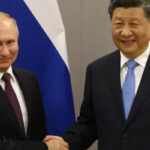In the last decade the three nuclear-armed states in Southern Asia ? China, India and Pakistan ? have been engaged in developing missiles that they consider necessary to support their respective deterrent needs. In this paper, Dr Manpreet Sethi captures capability trends depending on their approach to nuclear deterrence and assesses the impact of missile developments on strategic stability.
Credible nuclear deterrence presupposes the availability and integration of certain essential components that collectively constitute a nuclear arsenal. Delivery systems, deployable across a variety of platforms and of requisite range and reliability, are one such critical element. Accordingly, in the last decade the three nuclear-armed states in Southern Asia ? China, India and Pakistan ? have been engaged in developing missiles that they consider necessary to support their respective deterrent needs.
This paper identifies recent trends in missile development in the region, focusing on the above-mentioned states. It captures capability trends, considers the differing capability emphasis among the three countries depending on their approach to nuclear deterrence and assesses the impact of missile developments on strategic stability.
It is evident that the offensive and defensive missile forces of China, India and Pakistan are more capable and varied than they were a decade ago. As each country’s inventories evolve, they will inevitably impact the others’ threat perceptions and potential responses. Based on how the developments across the borders are perceived, counteractions could be taken, leading to a chain of action and reaction.
Dr Manpreet Sethi
Author: Manpreet Sethi
Distinguished Fellow, Centre for Air Power Studies, New Delhi
Source: https://www.iiss.org/blogs/research-paper/2021/06/missile-developments-southern-asia


